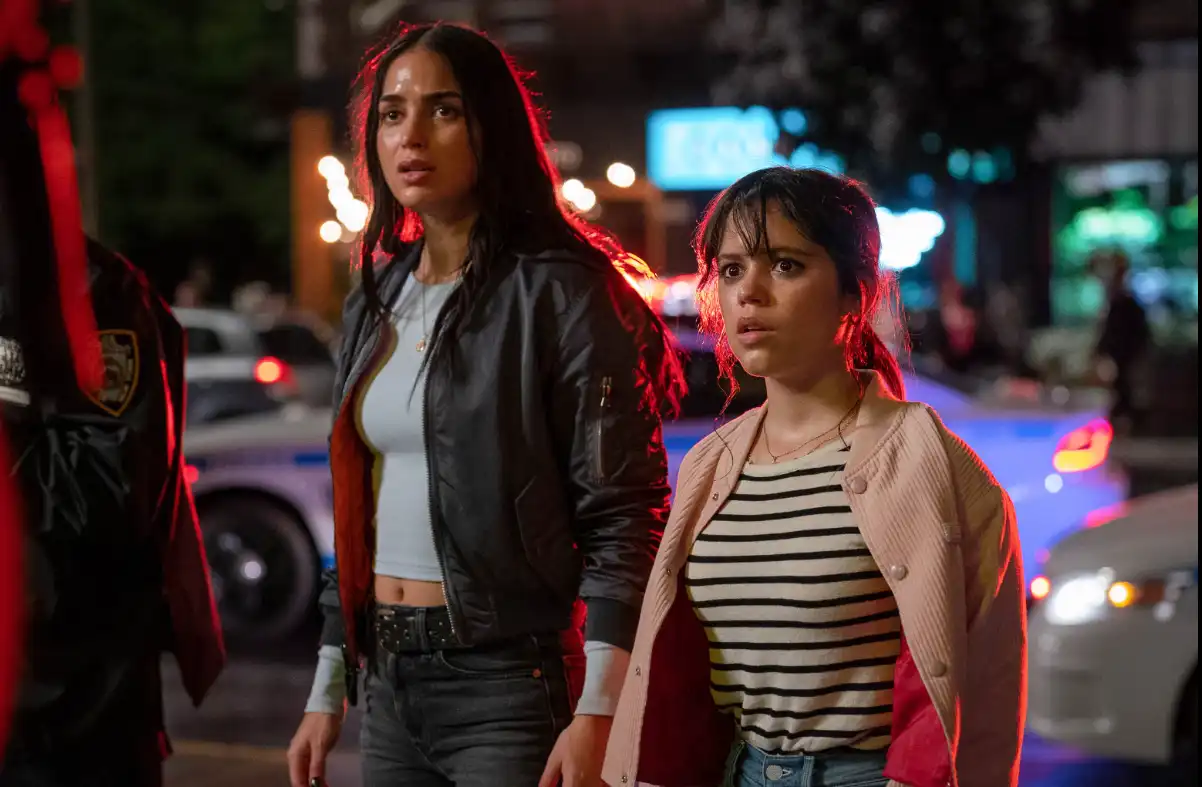
Film Review: Scream VI
Film Reviews
Scream VI
Directors: Tyler Gillett, Matt Bettinelli-Olpin
Paramount Pictures
In Theaters: 03.10
Don’t fret—no Scream VI spoilers here! However, this review spoils some plot points of previous films of the franchise. You have been warned.
Not long after seeing Scream (2022) (the “requel” and fifth film of the franchise), behind-the-scenes Scream VI TikToks made by the set’s designated social media guru, Reece Feldman, filled my For You Page. The film’s social media presence has created great anticipation for the film and its marketing, evincing Scream’s status as an iconic horror film franchise and the legacy up to which it must live.
With a couple of returning legends from the previous films, Scream VI has just enough callbacks to be nostalgic without it being the crux of the story. It introduces a completely new setting, feeling and imagery while maintaining the rules every Scream movie has followed. The first act is Scream VI’s strongest. The two leading ladies from Scream (2022)—Jenna Ortega’s Tara and Melissa Barrera’s Sam Carpenter—have run away from Woodsboro, the home of the first and many Ghostface killings, and into the belly of the beast: New York City. As Gen Z’s official Scream Queen, Ortega continues to be one of my favorites and proves to be one-of-a-kind. In spite of the writers giving her character little depth, her and Barrera had a greater sense of chemistry in this installment, and I felt more of a connection to both of the characters.
Tara and her surviving friends of the most recent Woodsboro massacre, Chad (Mason Gooding) and his sister, Mindy (Jasmin Savoy Brown), attend college in the city, anticipating safety given New York’s guise of security. As we know, Ghostface can be anyone, especially the person you least expect. Joining the gang and adding more ingredients to the victim and suspect stew are Mindy’s new girlfriend, Anika (Devyn Nekoda), the Carpenter sisters’ new roomie, Quinn (Liana Liberato), and Brad’s dorky dorm mate, Ethan (Jack Champion).
I fell in love with Scream VI because of its eerie New York setting and its even bigger and more immersive kills. The film spares no blood, guts and gore this time around. Amid the many people swarming a subway, Scream VI masters a sense of entrapment. As Tara and Sam run from their apartment building to a corner store, you realize these characters aren’t safe anywhere. For the first half of the movie, I was pleasantly surprised with how the plot was rolling, the chemistry between the characters and the anxiety-inducing action sequences, but my excitement dwindled as the story reached its formulaic twist, a letdown compared to what I’d imagined. Sitting during the credits, I remembered: This is Scream. Isn’t that the point?
What’s difficult about giving an honest review of any Scream movie is that their weaknesses are their strengths: cheesy lines, poorly-written peaks in the story or even “bad acting.” It can be difficult to identify what’s truly bad and what’s intentional. This tongue-in-cheek franchise is notorious for analyzing the horror genre (particularly slashers) and making fun of it. For example, the sequels mock and also follow the formula of a sequel, and Scream VI plays with the tropes of a franchise as much as genre. For instance, Mindy (the niece of OG slasher-film expert Randy in Scream) delivers a monologue walking through potential victims and suspects through the lens of slasher tropes and stereotypes.
This horror-critiquing-horror or horror-paying-ode-to-horror is growing tired, and over the last decade we’ve seen clever and interesting horror films commenting on clever and interesting horror films. Even when successful, it’s feeling overdone. As bad as the bad moments can be, Scream VI teases its uniquely iconic and long-winded pedigree.
Modern blockbusters lack a certain artistry that even the original Scream has, and none of these contemporary sequels will amount to the first or any of the Wes Craven sequels. The sequels’ major budgets, expensive equipment and perfect, high-definition imagery can somehow make them feel cheaper. Granted, the 1996 Scream was high-definition compared to previous decades of horror, but the fact that this is a franchise with six entries makes it hard to ignore the Hollywood profit motive behind all the production. To praise things like shot composition and cinematography feels like praising a budget.
Even though the camp of the franchise lives on in this Scream VI, a new darkness and gravity exists here. Its kills are grander and anxiety-inducing. Its Ghostface is relentless, and its atmosphere appears more realistic than usual. This chapter is not the end, and even though a seventh hasn’t been greenlit yet, the story allows it. It would be a great disappointment if it didn’t. Scream VI, as the biggest and grandest so far, is setting us up for something big—you can feel it. I’m eager to see those behind-the-scenes TikToks again as I anticipate the next and (hopefully final) chapter of the best whodunnit puzzle in cinema. –Birdy Francis
Read more reviews of slasher and horror films:
Film Review: Violent Night
Film Review: Halloween Ends